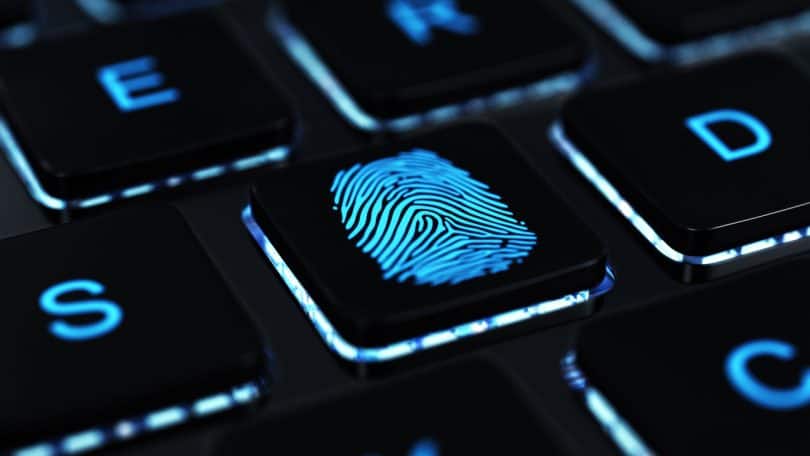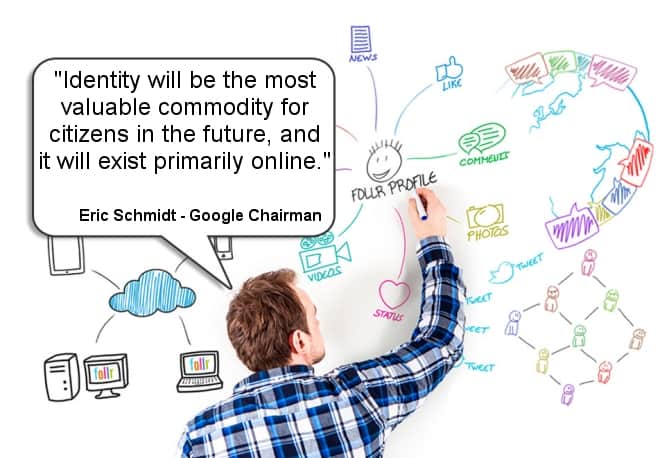With a digital identity, people or objects can be clearly identified by computers. Real people are represented by digital identity in the virtual world. Various features can be used for identity.
While attributes for the characterization of persons such as physical characteristics or personal data are used for an identity in the real world, electronically processable features are used for digital identities.
Typical features of a real identity are, for example, a fingerprint, an image of the face, the iris features of the eye, the body size, the name, the address, or the birthday. Attributes of a digital identity can be a username and password, smart cards and token or biometric data. Often, in the digital as well as in the real world, several features are combined with one another in order to ensure the clear identification better.
A chip card, a user name, and a password can be necessary at the same time to log on to a system or to make transactions. A distinction feature between real and digital identities is that there are much greater external influences and manipulations for digital identities. In addition, people can easily access multiple digital identities at the same time.
Use of digital identity
Digital identity is used for many applications. For example, users with their digital identity can log in to their social profile, order at an online shop or retrieve their e-mails. Depending on the protection and confidentiality of the respective data accessed by the identity, different methods of authentication are used.
Biometrics and digital identity
In the meantime, biometric data have become established for the reliable detection of digital identities in many areas. With the help of sensors, biometric features such as fingerprints, faces or the eyes of real persons can be read into computers, digitized and compared with previously recorded and stored data. For example, the identity of a user can be detected against the smartphone using, for example, the integrated sensor and the fingerprint and can be linked with its identity.
The identity card – link between real and digital identity
Modern identity cards enable owners to clearly demonstrate both their real and digital identity. Functions can be used to transfer the data stored on the new ID card (nPA) securely and encrypted to an application. The owner thus obtains an identity derived from his real identity.
Management of digital identities and the risk of misuse
Individual characteristics and attributes must be stored for the use of digital identities by IT systems. In order to prevent misuse of the digital identity, security and data protection must be placed on the storage and processing of the data. Possible abuse scenarios include identity theft, unauthorized alteration of identity, and unauthorized access to personal data. A further abuse potential arises from the creation of multiple digital identities or the unauthorized assignment of an identity to actually anonymous user data. There are different methods, which can be used to draw conclusions about the digital identity from the surfing behavior of a user and the data transmitted by the browser.








